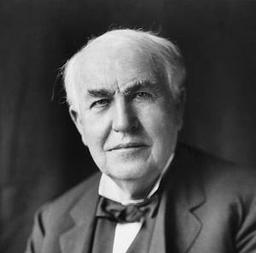27 Quotes
"Holliday and his team also understood that skills were only part of what they had to assess before moving on to execution. Equally important were the mind-set shifts required to apply the skills effectively."
— Bill Schaninger
The forgotten step in leading large-scale change"More fundamentally, the organization could improve its health only by changing mind-sets about how it should be run."
— Bill Schaninger
The forgotten step in leading large-scale change"Finally, at the heart of the effort to increase personal ownership, mind-sets would have to change from “I own what I control, and others hold me accountable” to “I own the full positive impact I can have on others and on the business broadly.”"
— Bill Schaninger
The forgotten step in leading large-scale change"Once the skill-set and mind-set shifts required were fully understood, strategic plans were adjusted to ensure that they enabled the needed shifts and thereby paved the way for successful execution of the strategy."
— Bill Schaninger
The forgotten step in leading large-scale change"Once the first stage, setting aspirations, is complete, they assess their ability to realize those aspirations instead of rushing into action planning."
— Bill Schaninger
The forgotten step in leading large-scale change"Research shows that when change programs assess the skills required to fulfill their performance aspirations, they are upward of six times more likely to succeed."
— Bill Schaninger
The forgotten step in leading large-scale change"Skill-set requirements can be assessed in a three-step process."
— Bill Schaninger
The forgotten step in leading large-scale change"First, determine which skills matter most for your performance aspiration (in other words, quantify demand for them)."
— Bill Schaninger
The forgotten step in leading large-scale change"Next, understand which skills you have now and where else they may exist in the marketplace (supply)."
— Bill Schaninger
The forgotten step in leading large-scale change"Finally, bring the supply and demand views together and determine how to close any gaps."
— Bill Schaninger
The forgotten step in leading large-scale change"Demand for skill sets can typically be well understood by interviewing business leaders and functional experts and asking which skills are most important to the strategy, are hardest to find, and create the most value."
— Bill Schaninger
The forgotten step in leading large-scale change"The next step is a structured inquiry into the current state of the skills required and the related external dynamics. Companies should explore the quality and quantity of their existing skills, as well as their ability to attract more from outside the company."
— Bill Schaninger
The forgotten step in leading large-scale change"Finally, to learn how a company’s employee value proposition (EVP) stacks up against the competition’s, use focus groups, exit interviews, site visits, and social-media analyses (Glassdoor and LinkedIn can be invaluable)."
— Bill Schaninger
The forgotten step in leading large-scale change"Once skill sets have been prioritized, there are three possibilities for closing any gaps: build the skills you need by reskilling and upskilling the current workforce; buy the skills by hiring new people, tapping into new talent pools, and “acquihiring” (acquiring a company primarily for its talent); or borrow the skills by relying on contractors, partnerships, or outsourcing."
— Bill Schaninger
The forgotten step in leading large-scale change"Just as important as assessing your skill-set requirements is understanding the employee mind-set shifts needed to improve organizational health and performance."
— Bill Schaninger
The forgotten step in leading large-scale change"In the roughly 70 percent of change programs that fail to deliver results, the vast majority of problems can be attributed to the “soft stuff”: employee resistance to change and inappropriate leadership behavior."
— Bill Schaninger
The forgotten step in leading large-scale change"companies that take the time to identify deep-seated ones are four times more likely than those that don’t to rate their change programs as successful.8"
— Bill Schaninger
The forgotten step in leading large-scale change"There are three steps in assessing mind-sets effectively: identifying helping and hindering behavior, uncovering the underlying mind-set drivers, and reframing the root-cause mind-sets."
— Bill Schaninger
The forgotten step in leading large-scale change"Mind-sets differ from the external factors that may have shaped them originally, such as incentive systems, role modeling, and expectations. Changing the external factors can have an impact in the long term, but in the near and medium term subconscious norms often persist despite such changes."
— Bill Schaninger
The forgotten step in leading large-scale change"The primary tool for diving beneath the surface is an interview technique called “laddering,” which uses multiple forms of inquiry to uncover the multiple levels of why people hold a particular view."
— Bill Schaninger
The forgotten step in leading large-scale change"The “ladder” of questions prompts the interviewees to understand their deepest motivations and to state the values and assumptions that shape their personal world."
— Bill Schaninger
The forgotten step in leading large-scale change"“Not allowed” mind-sets embody perceptions of what’s expected and accepted; “can’t” ones, perceptions of how available or capable resources might be; and “won’t” ones, views of a person’s sense of identity and values, as well as beliefs about power dynamics."
— Bill Schaninger
The forgotten step in leading large-scale change"A complementary approach involves using visual cues in focus groups."
— Bill Schaninger
The forgotten step in leading large-scale change"The third tool for understanding organizational mind-sets is qualitative data analysis (QDA), which mines rich sources of textual data—for instance, reports, websites, advertisements, internal communications, and press coverage."
— Bill Schaninger
The forgotten step in leading large-scale change"One basic, straightforward, and familiar QDA technique is the use of “word clouds,” which analyze how often particular words appear in a given body of texts."
— Bill Schaninger
The forgotten step in leading large-scale change"The best kind of reframing not only brings the subconscious into consciousness in ways that expand the realm of possibility but also makes the reframing memorable, so it can be discussed in the context of day-to-day work."
— Bill Schaninger
The forgotten step in leading large-scale change"Ultimately, change leaders should home in on a short list of prioritized mind-set shifts and the related behavior"
— Bill Schaninger
The forgotten step in leading large-scale changeExplore More Quotes 📚
Want to Save Quotes?
Glasp is a social web highlighter that people can highlight and organize quotes and thoughts from the web, and access other like-minded people’s learning.

















